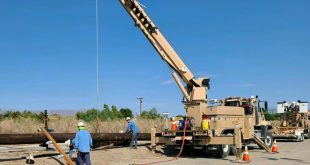California is no stranger to scorching temperatures, but recent years have seen a rise in extreme heat events that have left many residents concerned.
Most of California got a reprieve from extreme heat but experts say it won’t last — extreme heat is here to stay. What works best in terms of building public awareness in underserved, often highly isolated parts of the state about its dangers? What success stories can be shared about building resilience in these communities?
What challenges lie ahead? In a media briefing sponsored by the Office of Community Partnerships & Strategic Communications, a statewide update on the heat front, a public health perspective from San Joaquin, and the accomplishments and concerns of four community-based organizations working in San Joaquin, Ventura, and Butte counties and with people with disabilities.
It was highlighted that California had made meaningful progress in preparing for extreme heat, thanks in part to the Heat Ready California campaign.
The two-year $20 million campaign focuses on heat-sensitive groups at the highest risk, including those 65 years of age or older, workers, and individuals with chronic illness, disabilities, or who are pregnant. The campaign is part of the Governor’s Extreme Heat Action Plan, which is backed by more than $400 million, to guide the state’s response to heatwaves, ensuring California is reaching vulnerable communities, protecting frontline workers, and helping communities stand up cooling centers.
Scientists project that all of California will be impacted in the years and decades to come by higher average temperatures and more frequent and life-threatening heat waves, disproportionately impacting the most vulnerable communities. Californians can learn more about these heat projections and what they mean for their community by using the California Heat Assessment Tool. Californians can find their community’s heat risk level by using the National Weather Service’s HeatRisk Prototype or by following local weather forecasts.
These efforts have targeted vulnerable populations and have been conducted in multiple languages to ensure accessibility.
California may have experienced a reprieve from extreme heat. Extreme heat events are becoming more frequent, severe, and prolonged due to climate change, and it’s very important to recognize that heat-related health impacts can even prolong into other seasons.
The San Joaquin County’s public health department focuses on releasing safety messages, including advice on staying safe in extreme heat. These messages emphasize the dangers of heat-related illnesses and the importance of prevention.
Dr. Maggie Park, County Public Health Officer, San Joaquin County Public Health
Services mentioned how the region experienced record-breaking temperatures, with Stockton reaching a high of 115 degrees.
“Low-income neighborhoods and communities with higher Black, Hispanic, and Asian populations experience significantly more urban heat than wealthier and predominantly white neighborhoods. This highlights the importance of addressing health equity issues related to extreme heat,” Park said.



